The genius of the Sevastopol defense. Military engineer Edward I. Totleben
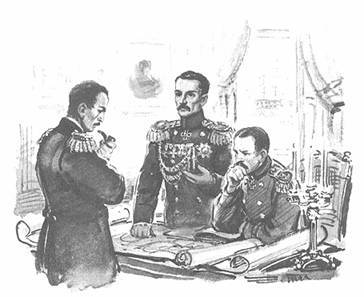 Edward Ivanovich Totleben was born in the Latvian city of Mitava (now Jelgava) 8 in May 1818 of the year. His grandfather, a representative of the old noble family of Thuringia, abandoning all feudal rights, chose to engage in trade and moved to the Baltic provinces of our country. Totleben's father, Johann Heinrich, attributed to the merchants and also engaged in commercial activities all his life. Edward himself was the fifth of seven children of Johann Heinrich and Anna Zander.
Edward Ivanovich Totleben was born in the Latvian city of Mitava (now Jelgava) 8 in May 1818 of the year. His grandfather, a representative of the old noble family of Thuringia, abandoning all feudal rights, chose to engage in trade and moved to the Baltic provinces of our country. Totleben's father, Johann Heinrich, attributed to the merchants and also engaged in commercial activities all his life. Edward himself was the fifth of seven children of Johann Heinrich and Anna Zander.The boy received his primary education at the school of Dr. Guttel - the best educational institution in Riga. The interest of the guy in military architecture began to manifest itself in his early years. At the cottage in the vicinity of the city, where his family spent the summer, Totleben, with the help of his comrades and people who served in his parents' house, built the redoubts with parapets and ditches according to all the rules of engineering. His father, drawing attention to the inclinations of his son, took him to 1832 year in St. Petersburg, where Edward was accepted as a conductor in the third class of the Main Engineering School. At the beginning of 1836, he was promoted to field engineer, but the talented young man failed to complete the training course. He was diagnosed with a serious heart disease, which is why Edward was expelled and transferred to serve in the engineering team of Riga.
The treatment at home went to his advantage, and in November of the same year he returned to St. Petersburg and continued his studies. Totleben successfully graduated from the junior officer class and in the rank of second lieutenant in January 1838 moved to the senior. But at this time his illness became acute again, and the guy was finally forced to abandon attempts to complete the course. February 5 he was expelled from college and appointed to active service in the Riga team.
Not wanting to put an end to his military career, Eduard Ivanovich in the spring of 1839, in accordance with his request, was transferred to the grenadier sapper battalion, and in the summer of the following year he was appointed lieutenant to the sappers training battalion located near St. Petersburg in Krasnoe Selo. Here a young engineer met with an outstanding Russian engineer, General Karl Schilder. Appreciating the knowledge and diligence of the officer, Schilder instructed him to undertake experiments on his pipe counter-mine system, designed to combat the enemy’s underground mine galleries. For several years Totleben persistently studied this issue and achieved impressive results. For the works of Eduard Ivanovich was awarded his first orders - St. Stanislav and St. Anne of the third degree, and in May 1845, he was made headquarters captain.
In the spring of 1848, Totleben was sent to the Caucasus. Eduard Ivanovich received the baptism of fire under Gergebil, where he arrived on June 9. For a long time he was not given any instructions or, as he himself wrote, “they allowed him to remain inactive under fire”. Ultimately Totleben was ordered to build a battery gap. Five days, while the work was in full swing, the young engineer did not close his eyes and personally commanded the sappers under strong enemy gun and shot fire. For the capture of Gergebil, Totleben was awarded the rank of captain, and for participation in the bloody storming of the Mikendzhy Heights in September, 1848 was awarded the Order of St. Vladimir of the Fourth Degree and a golden saber. The engineer spent winter 1848 of the year in Temirkhan-Shura (now Buinaksk), teaching sappers mine and siege works. In July, 1849, during the siege of the Choh aul, was heavily wounded by the head of military engineers, Captain von Kaufman, and Edward Ivanovich was in charge of managing all the siege work. He independently carried out a nightly reconnaissance of the terrain right in front of the enemy front and noted the places for the batteries, which had already been built by mid-August.
In 1850, Totleben was offered a job as a senior engineer in Dagestan, but he refused this post and was transferred to Warsaw by Schilder's adjutant. It should be noted that the relationship between these people did not always evolve perfectly. Impetuous and impulsive Karl Andreevich hardly tolerated Totleben’s methodical and loving order. Already after a year of joint work, Eduard Ivanovich began to bother about his transfer to the Northern capital, and at the end of 1851 was sent to the office of the chief of engineers of the Grenadier and Guards Corps. And on February 23 1852, he married Baroness Victoria Leontievna Gauf.
In addition to his employment in 1852-1853, Totleben diligently studied the works of the “classics” of engineering - Dufour, Sumar, Vauban. At the same time, on the orders of the authorities, he prepared two extensive works - attacks on the system of bastion style and caponier front, approved by the sovereign and used in practical exercises at the training ground in Peterhof.
During the Danube campaign, Schilder, who led all the engineering work during the siege of Silistra, having forgotten the previous differences, brought Totleben to him. Eduard Ivanovich was appointed the usual major trenches, but in fact was the first assistant of Karl Andreevich, spending days and nights at work. Totleben's sappers, reaching a double sleeper to the Arab-Tabia counter-scarp, crossed the moat by a covered passage, held a mine gallery under the inner crest of the parapet and, knocking over the counter-scarp, crowned it. 1 Jun Schilder was wounded in the leg by a shrapnel grenade, and all the siege affairs on the left flank were entrusted to Eduard Ivanovich. He continued the mine work against the Arab-Tabiya counter-scarp, and by 7 June, by forming a quite amenable collapse by explosion. Russian troops immediately occupied the parapet, Totleben personally supervised the organization of lodgments in it to protect against enemy shooters, and was easily wounded on the cheek.
Unfortunately, all this had no positive consequences - on June 11, on the orders of the commander-in-chief, the siege from the fortress of Silistria was lifted. On the same day, General Schilder died on the operating table. Despite the failure under the walls of the Danube stronghold, the experience gained was very useful to Totleben. For courage and heroism, he was awarded the Order of Saint George of the fourth degree and presented to the rank of colonel.
Meanwhile, rumors about the upcoming landing of the allied forces in the Crimea were becoming more and more definite. Prince Mikhail Gorchakov, aware of the sad state of engineering in parts of Prince Menshikov, decided to send Totleben to him. In the sent letter, Gorchakov recommended him as Schilder’s most capable student, pointing to the combat experience of Eduard Ivanovich and the universally recognized courage. 10 August 1854 Totleben arrived in Sevastopol, whose defense he was destined to immortalize his name.
Prince Alexander Menshikov, after reading Gorchakov's message, said to Totleben: “There is a sapper battalion in the city. Take a break after the road and go back to the Danube. ” However, Edward Ivanovich did not leave. The next day he inspected the forts and coastal batteries of Sevastopol and found them in excellent condition. The positive response of a military engineer, reaching the ears of Menshikov, somewhat improved the prince's attitude to Totleben. And although there was no talk of departure, Eduard Ivanovich, who continued to inspect the fortifications, was in the position of a volunteer assigned to the headquarters.
Having toured the least protected Ship and City sides of the city, Totleben presented his thoughts on the work to strengthen them, but received a dry answer from Menshikov that “the fortress does not expect any assassination from the Crimean Tatars”. All questions about the strengthening of ground defense remained open until in early September, by the telegraph, the news of the appearance of the Allied fleet with the landing. The landing, in which the prince still did not believe, became apparent, and the Russian troops hurriedly moved towards the enemy to the Alma River. In the city, where there were only naval crews and four reserve battalions, hasty work began on the erection of defense on the northern side, from where, in the event of a defeat near Alma, one had to expect the enemy. Totleben supervised all the work, by the way, so far it has not received official designation.
Thanks to the selfless work of the workers and the talented leadership of Eduard Ivanovich in one week, according to Vladimir Kornilov, "more than a year was done." The front position was able to reach one and a half kilometers, and on the sides of the northern fort to build a number of batteries. Still, by September 8, when the Russian troops, crushed by twice the superior enemy, were forced to retreat, the northern side of the city remained virtually defenseless. The entire position was defended only by 30 frontal guns, and the garrison of eleven thousand poorly armed sailors was unable to withstand the impact of the enemy’s sixty-thousand-strong army.
However, the “scenery”, thrown by Totleben’s skillful hand, misled the officers who had been sent to reconnoitre the enemy officers who had reported to the leadership “about numerous powerful earthworks”. This message, along with the sinking of Kornilov ships that blocked the entrance to the raid, forced the Allies instead of the assault to bypass Sevastopol with a flank march and gain a foothold on the south side.
September 12 Totleben was appointed head of all the defensive work of Sevastopol. The task before him was one - to turn the city into a fortress. The success of this enterprise seemed unthinkable, 15 September, he wrote a letter to his wife, in which he said goodbye, as he fully shared the garrison’s unanimous desire to die in position, but to show the enemy “Russian defense”.
Totleben began to improve the defensive line at once in all directions and by all means capable of obstructing the assault. Work was in full swing both day and night. At the strongholds, new fortifications were built, the rifle trenches tied the main defensive points, guns were brought down from the ships, strengthening the frontal defense of the positions. Reconnaissance carried out by the enemy, gave an exaggerated idea of the strength of a suddenly grown solid defense line, bristling with large-caliber guns. Then the Allies developed a new plan, according to which the assault was to be held after the bombing of the city. The time that the enemy spent on the construction of siege batteries, the besieged used in order to adequately prepare for the artillery battle, from the result of which the assault depended. From September 14 to October 5 Totleben built over twenty new batteries.
The first bombardment of Sevastopol took place on October 5. On the City side, our gunners suppressed almost all the batteries of the French, but on the Ship - the victory was left to the British, who possessed the best siege artillery in the world. Our fortifications, menacing from afar, but lined up in a hurry, were scattered under the blows of enemy shells, and the emblems of earthenware fell from their own shots. However, the garrison survived, and the defeat of the French batteries forced the Allies to abandon the assault.
In the very first nights, all the damage caused by the bombardment was corrected, and then new work began to strengthen the front. Despite the daily cannonade, Edward Ivanovich managed to create and arm another twenty batteries by October 20. At the same time, the defectors received information about the new assault, which is being prepared in the month of November. Not hoping to withstand a blow at the front lines, Totleben prepared to explode a number of the weakest bastions, and in the event of a retreat from the Korabelnaya side, he brought all the naval barracks to a defensive state, making one common redoubt. On the City side, all the buildings closest to the bastions were redone. Caronades were placed in more durable (large-caliber cast-iron cannons), and the outlets from the longitudinal streets were barred with stone barricades. However, this assault did not take place.
During the battle of Inkerman Totleben was on the right flank. During the retreat, he happened to be on the road, where our artillery got up, the path of which was blocked by wagons cracked by shells. Left without cover, the guns could easily fall into the hands of British riflemen who were pursuing retreating troops. Eduard Ivanovich stopped a company of the Uglitsky regiment that was passing nearby, and also sent a report to Istomin on Malakhov with a request for help. Together with the on-time battalion of the Butyrsky regiment and two Vladimir battalions, he attacked the British. The attack, supported by the fire of the cannons deployed by Totleben, was fully accomplished, and the sappers who arrived under cover on their hands carried the guns.
The temporary weakening of the enemy’s activities after the battle of Inkerman gave Edward Ivanovich the opportunity to give the hastily built fortifications a more solid and long-term character. The fortifications located at the main points were closed and organized by the gory (rear). The defense of the City side was strengthened by building a second line of redoubts and barricades. Major works were also undertaken on the north side - in the event of the landing of the enemy on Kutch. At the same time, communications were improved everywhere, profiles and embrasures were strengthened, and dugouts were arranged for the troops.
In the winter of the 1854-1855, the Allied siege works progressed extremely slowly. Totleben used this in order to move to active defense. Based on the experience of the Caucasian wars, he covered all the observation posts of the bastions with debris, making it possible to observe the enemy from close range, as well as disturb him with rifle fire. Totleben later changed the character of the blockages, rebuilding them into the correct lodgement system.
At the end of January, strong reinforcements arrived at the Allies, and the well-known French military engineer, General Niel, arrived. The main direction of attack was transferred to the Ship side directly against Malakhov Kurgan. Totleben, guessing the intentions of the enemy, also focused on this area. Three new lines of fortifications appeared on Kilenbalochnyh heights, which allowed for a long time to delay the fall of Malakhov Kurgan. Also on the hill in front of Malakhov a fortification was organized, called Kamchatka lunette.
Strengthening the Sevastopol strongholds forced the Allies to make another assault attempt. At the end of March, the siege batteries opened hurricane fire, which lasted for ten days at intervals. However, intensified bombardment led to complete frustration with only one IV bastion. Every night, the city’s defenders repaired the damage, and by dawn the defensive line was able to fire back. The assault was again canceled.
Totleben's work in the last period of the city’s defense was aimed at the general strengthening of the Ship’s side and the restoration of the half-destroyed IV bastion. At the end of May, the third, most powerful bombardment began. By the evening of the next day, when the advanced fortifications of the left flank of the Russians were half-destroyed, the Allied forces moved into the attack and, after a stubborn battle, captured the Kamchatka lunette and Kilenbalochnykh redoubts. However, the enemy did not develop success, giving the defenders of the city time not only to repair the damage, but also to strengthen the most threatened areas. The assault continued in early June. Despite the incessant bombardment of the ship side, the garrison, under the personal supervision of Totleben, managed to repair all the damage. At three o'clock in the morning the enemy's troops rushed to the assault on Malakhov Kurgan, but were repulsed. The Allies suffered huge losses from the fire of the guns mounted on the front face. Eduard Ivanovich himself during the battle was slightly wounded in the face by a splinter.
Having failed, the enemy returned to the siege works. Totleben began to organize a wide countermin system in front of the mound, developed a plan for the cross-ground artillery defense. However, it was not possible to implement his talented engineer. During the descent from Malakhov's mound, he was shot right through his right leg. During the first two months Totleben had to undergo several operations. However, he could only occasionally, without going into details, listen to reports and give instructions. In the courtyard of his house, shells fell down more than once, but the engineer never agreed to move to a safer north side. Despite the treatment, the wound was inflamed, and Eduard Ivanovich in a semi-unconscious state was transported to a farm in the Belbek valley eleven kilometers from Sevastopol.
Clean air and care somewhat restored Totleben's strength, and in August he again began to help with the advice of the engineers who replaced him. However, no instructions could replace his personal presence at the bastions, and the matter quickly moved to a denouement. In late August, Eduard Ivanovich returned to the city, and three days later, from the rampart of the Northern fort, he observed the fall of Malakhov Kurgan.
Subsequently, the activities of Totleben during the defense of Sevastopol caused many disagreements. Some proclaimed him a genius engineer, fully sharing the views of Nakhimov, who claimed that “we would have disappeared without Totleben,” while others condemned almost all daring innovations and improvisations that he had introduced during the defense of an absolutely defenseless city to the beginning of the city confrontation. In addition, Edward Ivanovich himself was a man with a rather complex character. According to reviews of contemporaries, he was harsh with others, infinitely self-confident and convinced of his superiority, which he never found it necessary to hide. All this, of course, did not contribute to the excitement of sympathy for the military engineer, but even the enemies recognized his incorruptible honesty, composure and masculinity in battle, the constant concern for the common soldier. Totleben fulfilled his task of protecting the city superbly. Rejecting all the templates, he accurately determined the position of the main fortifications, alternately transferred activity to the most threatened areas, for the entire time of the siege he performed only the most necessary works at the moment. And his countermining activities completely stopped the underground attacks of the Allies, in whose ranks there was no worthy opponent. Assistant Chief of Staff Apollo Zimmerman said that during the truce the British and French officers "with keen interest asked them to show Totleben."
The works of Eduard Ivanovich were evaluated - in the spring of 1855 he was sent to major general with the appointment of an emperor to his retinue. In the first days of September Totleben left for Simferopol in order to finally restore his health - he still could not walk and walked on crutches. However, a week later he received an order to arrive in Nikolaev and bring the city into a defensive state. The works started with the speed and energy with which they were always made under his leadership - at the beginning of November, Nikolayev, whose strategic importance in connection with the fall of Sevastopol increased, turned into a huge fortified camp.
At the end of 1855, Totleben was allowed to return to St. Petersburg, where he was assigned to head the work to strengthen Kronstadt. During the winter, five new 15-25 gun batteries each were laid across the Northern Raid. A temporary fence of more than 80 000 piles was also organized. However, the hostilities expected in the Baltic Sea did not take place, and in March 1856 signed the Paris Peace Treaty.
At the beginning of the summer Totleben was seconded to inspect the fortresses of the Baltic coast, and on his return he attended the solemn coronation of Emperor Alexander II. In mid-September of the same year, Edward Ivanovich went abroad for treatment, as well as the study of local fortresses. He visited Germany, Belgium, France, Italy, Austria, Holland and returned to St. Petersburg only in October 1858.
A year later, Totleben was appointed head of the Engineering Department, and agreed to the position only on condition that he was given the right to manage the personnel of the corps of military engineers. In the period from 1863 to 1877, Eduard Ivanovich was actually at the head of the created Main Engineering Directorate. At that time, his main attention was paid to the completion of the work begun in the reign of Nicholas I to organize the defense of the borders of our country. In 1862, Totleben presented a note to the Minister of War entitled "General overview of the state of the fortresses of the Empire ...". Subsequently, this report served for many years as a guide in the implementation of work to strengthen our defense lines. However, to implement all proposals Totleben, even with their approval by the emperor, it was impossible - did not allow the position of finance. In addition, the technology in this transitional period made such progress that it seemed risky to undertake expensive buildings. As a result, it was decided to carry out modernization only in two points of our frontier line - Kerch and Kronstadt. By the autumn of 1863, Totlebeng significantly improved the Kronstadt werki, strengthened the mouth of the Neva, built batteries on the Kanonersky, Gutuyevsky and Krestovsky islands, in Chekushi and Galernaya harbor, and also strengthened the fortresses of Sveaborg and Vyborg, built a fortified camp near Tavastgus. During the restructuring of one of the Kronstadt forts - "Grand Duke Constantine" - was the first in the world equipped with parapets of armored steel. In addition, minor improvements were carried out in the fortresses: Dinaburg, Dinamünde, the Alexander Citadel, Novogeorgievsk, Brest-Litovsk, Zamost and Nikolaev. Eduard Ivanovich personally monitored the production of works, which forced him to leave St. Petersburg for months. However, personal presence had a huge impact on the quality and speed of work, stopping various abuses. Totleben spent whole days on construction sites during such detours. He preferred to get up at 4 in the morning hours, by 5 he was already in place and worked until 6-7 hours in the evening with a break of one hour.
Totleben paid great attention to the technical part. He closely followed all the improvements appearing in Western European military affairs, trying by setting up special commissions and organizing experiments to keep for Russia the advantage that she had in the field of engineering in the era of Nicholas I. It should be noted that Eduard Ivanovich did not support the breakdown of the military structure , which originated in Russia after the Crimean War. Totleben considered it unreasonable to forget the foundations of the military organization that had historically developed in Russia for fifty years, he condemned the “search for light” in the West, where, in his opinion, military affairs were at a lower level. He always expressed his views loudly and openly, which made him a reputation as a “brake of reforms” and “a limited supporter of the Nikolaev order.”
Totleben devoted a lot of time to the School of Engineering and the Academy. He closely followed the curriculum, held talks with professors, looked through the projects of the senior course, and every year spoke to the officers with lectures on the artillery armament of our fortresses. Being, above all, a practitioner, Totleben put a lot of effort into the development of various training works in the engineering troops, thanks to his cares, the joint training of sappers and gunners was used. In 1867, Totleben worked out the charter of the Society for the Care of Wounded and Sick Soldiers, and traveled to Moscow for a meeting with Metropolitan Philaret. It is curious that Fyodor Dostoevsky was one of Totleben’s friends. In 1856, Edward Ivanovich asked Alexander II to pardon the writer who was convicted under the article "political criminal". As a result of this, Fyodor Mikhailovich was promoted to ensigns, he was given back the nobility and allowed to engage in writing.
Before the Russian-Turkish war of 1877-1878, Totleben was appointed chief manager of the Black Sea coast defense. By the beginning of October, 1876 Kerch, Ochakov, Odessa, Sevastopol and Poti had been prepared by him for the encounter of the enemy. However, in the midst of his activities, Eduard Ivanovich was recalled to the northern capital. The reason for leaving “out of work” was his disfavor with the impending war, which he openly stated. Totleben said that our country is not ready for war, and the millions allocated to it are more profitable to spend on building fortresses and fleets, developing the railway network, and rearming the army. He pointed out the need to organize a broad base, digging in positions and thorough artillery preparation of attacks, which in military circles was considered almost cowardice.
After the failures of Plevna, Totleben was remembered, and after the command refused to take the open power to seize the city, the emperor ordered Eduard Ivanovich to be summoned to the army. At the end of September 1877 he arrived at the site and spent four days reconnoitring the area. At that moment, the forces of the Western detachment - 78 thousand people with 404 guns - held positions between Tuchenitsky ravine and the village of Verbitsy, occupying almost a third of the entire line around Pleven. With the troops there was only one sapper battalion and not a single engineering officer, the actions of the artillery were not united, the supply and the sanitary unit were organized extremely poorly. Totleben wrote: "It is sad to see all these disasters, it remains only to be surprised by the Russian soldier, who with all the patience and patience endures all hardships, bad weather and hunger."
In early October, reinforcements in the face of the grenadier and guards infantry and cavalry divisions approached. With their arrival, the number of Russian-Romanian troops at Plevna increased to 160 thousand people. Convinced that the city could not be taken by force, Totleben rejected all plans for the siege, offering the last option - the blockade. According to the calculations of Eduard Ivanovich, the Turks should have enough food for a couple of months, thanks to which the main disadvantage of the blockade - the longevity - disappeared.
The operation to close the blockade ring was carried out quickly and efficiently with the participation of the guard who arrived. Totleben then took up the problem of strengthening positions with a mass of new fortifications, introduced changes to already existing fortifications, established strict artillery fire control. In addition, he improved the conditions in which were Russian troops. Eduard Ivanovich paid special attention to the organization of the sanitary unit, arranged a more proper system for evacuating patients. The misuse of the commissaries forced him to transfer the issues of supplying units to troop commanders, which led to a significant improvement in food and clothing. And by mid-October, warm dugouts with ovens were prepared.
Totleben had only to calmly wait for the results of the blockade, but even that was not an easy task, since both the commander in chief and his most experienced commanders (in particular Skobelev and Gurko) stood for an energetic course of action. 19 of October came the order for the division of forces, which blocked the same fortified camp, into two independent groups with two independent leaders, who also had diametrically opposed characters: an enterprising and dashing cavalryman Joseph Gurko and a methodical, extremely careful Totleben. Confusion began, intensifying due to Eduard Ivanovich's illness. Only at the beginning of November the newly formed detachment under the leadership of Gurko moved to the Balkans, and Totleben finally became the sovereign manager of the blockade.
The blockade line was broken by Totleben into 6 sections, each of which he entrusted to the defense of a separate commander. On 47 kilometers of taxation accounted for 125 thousand people and 496 guns. At the end of November 1877, due to the lack of food, the Turkish army made a breakthrough. During the ensuing battle, the Turkish soldiers suffered significant losses, but, nevertheless, managed to capture three lines of trenches. However, the artillery fire and the reinforcements in the face of the Russian grenadiers forced them to first lie down in the trenches, and then turned into an irregular flight. At 2 o'clock in the afternoon enemy troops laid down weapon.
In February, 1878 Totleben received a telegram instructing him to immediately go to St. Petersburg, handing over the command to Alexander Dondukov-Korsakov. In March, the emperor had a conversation with Eduard Ivanovich about the capture of Constantinople and the closing of the Bosporus for the English ships that were stationed at the Princes' Islands and threatened to interrupt our communications with the Black Sea ports. Totleben recognized the fulfillment of both measures as feasible, and in April 1878 of the year issued an order on his appointment as commander-in-chief of the active army.
Unfortunately, Totleben, being a brilliant military engineer, had neither the talent of a commander, nor broad strategic views. His excessive caution led to the fact that he did not commemorate his command. Refusing to perform projects that in St. Petersburg seemed to him easily doable, Totleben found it more expedient to move to Adrianople. There, he actively takes care of ensuring that the Bulgarians have the opportunity to defend their independence, he has been bothering about the elimination of European commissioners and about creating a local police with Russian cadres. During this time, the Turks managed to gather around Constantinople 80-thousandth army and build fortified positions.
In September, Totleben was appointed Commander of the Odessa Military District in 1879, and in Vilnius, and Vilna, Grodno and Kovno Governor-General in May 1880. Numerous illnesses less and less allowed him to carry out state affairs, to which, moreover, Eduard Ivanovich did not feel attracted, preferring to devote most of his time to the troops entrusted to him. In the spring of 1882, Totleben caught pneumonia and went abroad for treatment. There he recovered, but his general condition continued to remain critical, and vision problems began. He spent the winter of 1883 in Wiesbaden, and in the spring he moved to the resort town of Soden, where he died on June 19 of the year. His body was transported to Riga, but the emperor found it more appropriate that the remains of the Sevastopol hero rest in the ramparts he built on memorable defense days. In October, 1884 Totleben's ashes were buried in the Fraternal Cemetery of Sevastopol.
According to the materials of the book N.K. Schilder "Adjutant General Edward Totleben" and the site http://genrogge.ru/
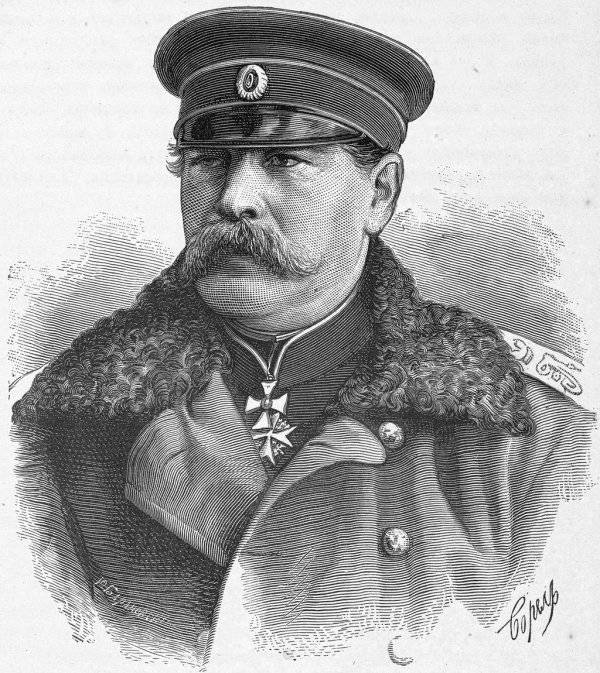
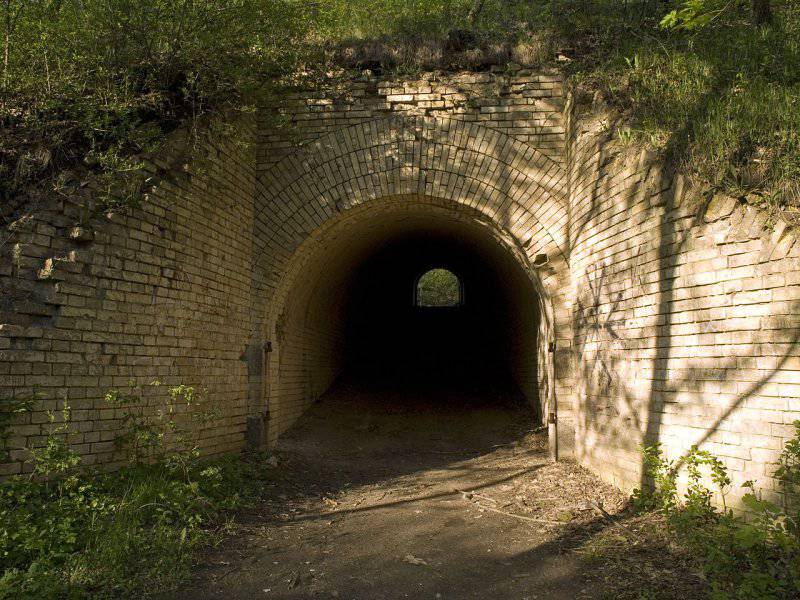
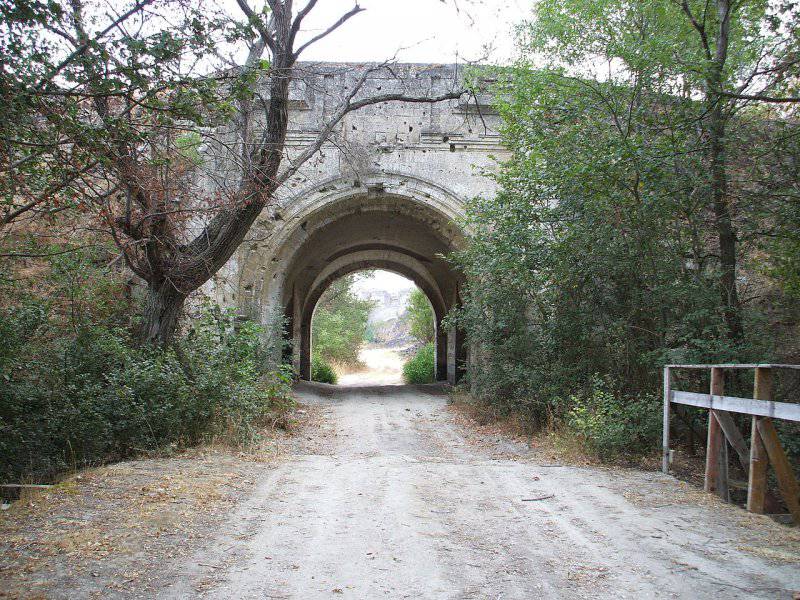
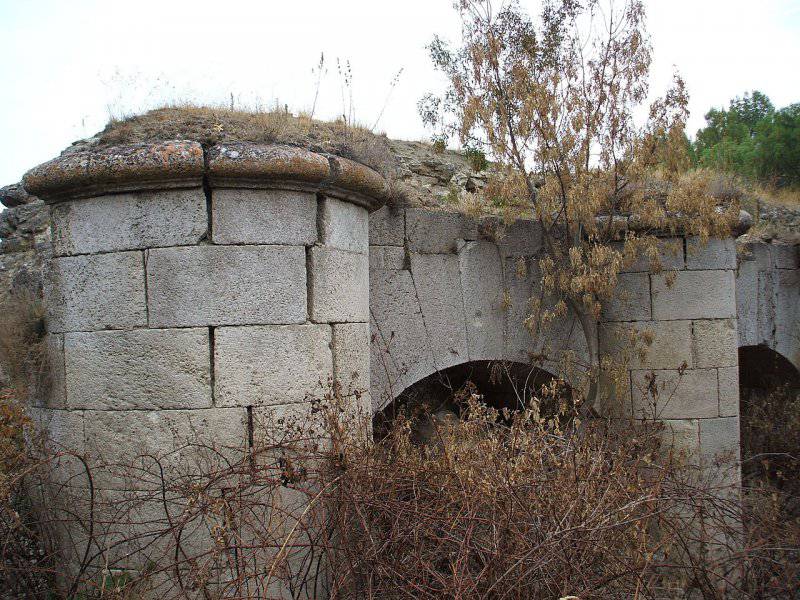
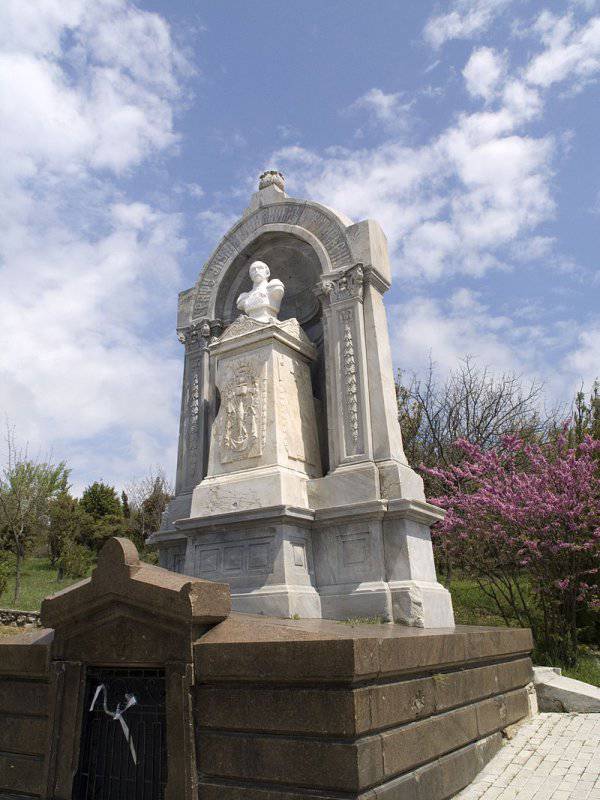
Information